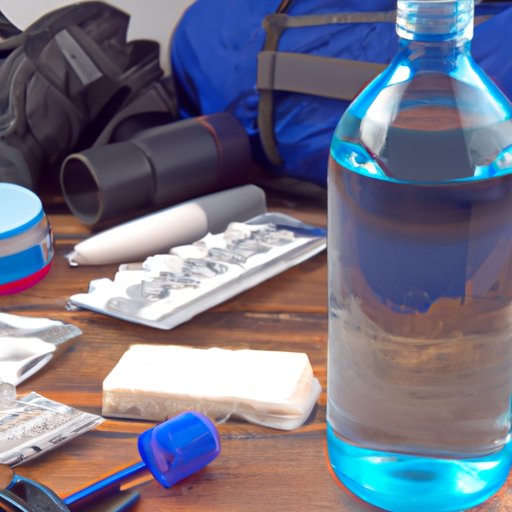Introduction
High altitude vacations can be an amazing experience, but they come with unique risks that must be taken into consideration. At high altitudes, the air is thinner and contains less oxygen, which can lead to altitude sickness in some people. To ensure a safe and enjoyable trip, it’s important to plan ahead and take steps to minimize the chances of getting sick.
Definition of High Altitude Vacation
A high altitude vacation is defined as any trip taken at an elevation of 8,000 feet (2,438 meters) or higher. This type of vacation is popular among hikers, skiers, and other outdoor adventurers who are seeking breathtaking views and once-in-a-lifetime experiences. While these trips can be incredibly rewarding, they also come with unique risks that must be taken into consideration.
Overview of Altitude Sickness
At high altitudes, the air is thinner and contains less oxygen than at lower elevations. This can cause altitude sickness, which is a condition caused by the body’s inability to adjust to the reduced levels of oxygen. Symptoms of altitude sickness include headache, nausea, dizziness, and shortness of breath. In severe cases, it can even result in death if not treated properly. It’s important to be aware of the symptoms of altitude sickness and to know when to seek medical attention.
Research the Destination
Before planning your trip, it’s important to research the destination. Check the climate at the time of year you plan on visiting, as well as the average altitude and terrain. These factors will help you determine what clothing and gear you need to pack. For instance, if you plan on visiting a mountain range, you may need specialized equipment such as snowshoes or crampons. If you plan on visiting a desert region, you may need to bring extra water and sun protection.
Pack Wisely
When packing for your high altitude vacation, it’s important to bring the right clothing and gear. Layering is key, as temperatures can fluctuate drastically throughout the day. Make sure to bring a warm jacket, gloves, hat, and waterproof boots. You should also pack sunscreen and sunglasses to protect yourself from the sun’s harsh rays.
Acclimate
It’s important to give your body time to adjust to the new elevation before engaging in strenuous activity. According to Dr. Christopher Minson, a professor of Human Physiology at the University of Oregon, “It’s best to start a few days before the activity and slowly increase the intensity over time. That way the body has time to get used to the low oxygen environment.”
Drink Plenty of Fluids
Staying hydrated is key when visiting high altitudes. Drink plenty of water and avoid dehydration, as this can exacerbate the effects of altitude sickness. If possible, drink filtered water to reduce the risk of gastrointestinal illness.
Avoid Alcohol
Alcohol consumption can worsen the symptoms of altitude sickness, so it’s best to avoid it altogether. Instead, focus on hydrating with water and eating nutrient-rich foods to keep your energy levels up.
Monitor Your Health
It’s important to monitor your health while visiting high altitudes. Be aware of the signs and symptoms of altitude sickness and let your doctor know if you experience any of them. If symptoms become severe, it’s best to seek medical attention immediately.
Conclusion
High altitude vacations can be incredibly rewarding, but they come with unique risks that must be taken into consideration. By researching the destination, packing wisely, acclimating your body, drinking plenty of fluids, avoiding alcohol, and monitoring your health, you can ensure a safe and enjoyable trip.
(Note: Is this article not meeting your expectations? Do you have knowledge or insights to share? Unlock new opportunities and expand your reach by joining our authors team. Click Registration to join us and share your expertise with our readers.)
